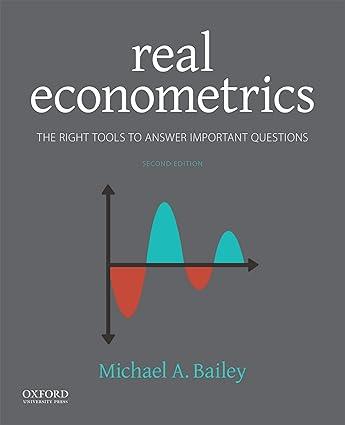In 1993, Georgia initiated a HOPE scholarship program to let state residents who had at least a
Question:
In 1993, Georgia initiated a HOPE scholarship program to let state residents who had at least a B average in high school attend public college in Georgia for free. The program is not need based. Did the program increase college enrollment? Or did it simply transfer funds to families who would have sent their children to college anyway? Dynarski (2000) used data on young people in Georgia and neighboring states to assess this question. Table 8.11 lists the variables.
(a) Run a basic difference-in-difference model. What is the effect of the program?
(b) Calculate the percent of people in the sample in college from the following four groups: (i) Before 1993on-Georgia, (ii) Before 1993/ Georgia, (iii) After 1992on-Georgia, and (iv) After 1992/Georgia. First, use the mean function (e.g., in Stata use mean \(\mathrm{Y}\) if \(\mathrm{X} 1==0 \& \mathrm{X} 2==0\) and in \(\mathrm{R}\) use mean \(\mathrm{Y}[\mathrm{X} 1==0 \& \mathrm{X} 2\) \(==0]\) ). Second, use the coefficients from the OLS output in part (a).
(c) Graph the fitted lines for the Georgia group and non-Georgia samples.
(d) Use panel data formulation for a difference-in-difference model to control for all year and state effects.
(e) Add covariates for 18-year-olds and African-Americans to the panel data formulation. What is the effect of the HOPE program?

(f) The way the program was designed, Georgia high school graduates with a B or higher average and annual family income over \(\$ 50,000\) could qualify for HOPE by filling out a simple onepage form. Those with lower income were required to apply for federal aid with a complex four-page form and had any federal aid deducted from their HOPE scholarship. Run separate basic difference-in-difference models for these two groups, and comment on the substantive implication of the results.
Step by Step Answer:

Real Econometrics The Right Tools To Answer Important Questions
ISBN: 9780190857462
2nd Edition
Authors: Michael Bailey




